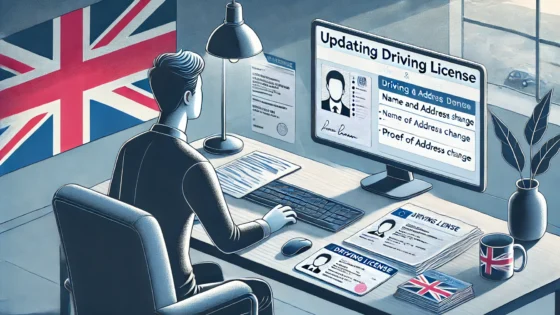Road accidents have become a pressing global issue, leading to injuries, fatalities, and significant economic losses. According to the World Health Organization (WHO), road traffic crashes claim approximately 1.3 million lives annually and leave millions more injured or disabled. Despite advancements in vehicle safety technology, the root cause of many accidents often boils down to human error, environmental conditions, and infrastructural challenges. Understanding these causes and implementing preventive measures is critical to reducing the toll of road accidents. This article explores the common causes of road accidents and offers practical advice on how to avoid them.
1. Distracted Driving
Distracted driving is one of the leading causes of road accidents worldwide. Activities like texting, talking on the phone, eating, or adjusting the radio can divert a driver’s attention from the road, increasing the likelihood of an accident. A momentary lapse in focus can have devastating consequences, especially in high-speed or high-traffic situations.
How to Avoid Distracted Driving
- Put Away Mobile Devices: Use hands-free options if necessary or turn off your phone while driving to avoid temptation.
- Plan Ahead: Adjust your GPS, radio, and climate controls before starting your journey.
- Stay Focused: Avoid multitasking and keep both hands on the wheel and your eyes on the road.
2. Speeding
Driving above the speed limit significantly increases the risk of accidents and their severity. Speeding reduces the time available to react to obstacles or sudden changes in traffic conditions, making collisions more likely. Furthermore, higher speeds amplify the force of impact, leading to more severe injuries or fatalities.
How to Avoid Speeding
- Follow Speed Limits: Obey posted speed limits and adjust your speed according to road and weather conditions.
- Use Cruise Control: On highways, cruise control can help maintain a consistent, safe speed.
- Plan Your Time: Allow sufficient time for your trip to avoid the temptation to rush.
3. Driving Under the Influence
Alcohol and drugs impair judgment, coordination, and reaction times, making driving under the influence one of the most dangerous behaviors on the road. Intoxicated drivers are less aware of their surroundings and more likely to take risks, often leading to catastrophic accidents.
How to Avoid Driving Under the Influence
- Designate a Sober Driver: Arrange for a sober friend or use ride-sharing services like Uber or Lyft.
- Plan Ahead: Avoid driving altogether if you plan to consume alcohol.
- Know Your Limits: Even small amounts of alcohol can impair your driving ability.
4. Reckless Driving
Reckless driving involves aggressive behaviors like tailgating, changing lanes abruptly, or ignoring traffic signals. Such behavior not only endangers the reckless driver but also other road users. Impatience and a lack of consideration for others often fuel reckless driving.
How to Avoid Reckless Driving
- Stay Calm: Practice patience, even during heavy traffic.
- Respect Traffic Rules: Follow signals, maintain safe distances, and avoid risky overtaking maneuvers.
- Avoid Aggression: If another driver behaves aggressively, avoid engaging and maintain a safe distance.
5. Poor Weather Conditions
Weather conditions such as rain, fog, snow, or strong winds can severely impact visibility and road grip. Wet or icy roads reduce tire traction, increasing stopping distances and the likelihood of skidding.
How to Avoid Accidents in Poor Weather
- Drive Slower: Reduce your speed to maintain control of your vehicle.
- Use Headlights: Ensure your vehicle’s lights are on to increase visibility.
- Maintain Distance: Keep a greater distance between your vehicle and the one ahead.
6. Fatigue and Drowsy Driving
Fatigue can impair a driver’s ability to concentrate, react quickly, and make sound decisions. Falling asleep at the wheel, even for a few seconds, can lead to catastrophic consequences. Long-distance truck drivers, night-shift workers, and those with sleep disorders are particularly at risk.
How to Avoid Drowsy Driving
- Take Breaks: Stop every 2-3 hours on long trips to rest.
- Get Adequate Sleep: Ensure you’re well-rested before embarking on a long journey.
- Switch Drivers: Share driving responsibilities if traveling with others.
7. Failure to Obey Traffic Rules
Disregarding traffic signs, running red lights, and failing to yield are common behaviors that lead to accidents. Such actions create confusion and increase the chances of collisions, especially at intersections.
How to Avoid Traffic Rule Violations
- Stay Alert: Pay attention to all traffic signs and signals.
- Understand Rules: Familiarize yourself with traffic laws in your area.
- Be Predictable: Avoid sudden actions that might confuse other drivers.
8. Vehicle Defects and Poor Maintenance
Mechanical failures such as brake malfunctions, tire blowouts, or engine problems can result in accidents. Regular maintenance is essential to ensure a vehicle is roadworthy.
How to Avoid Accidents Due to Vehicle Defects
- Regular Maintenance: Service your vehicle regularly and follow the manufacturer’s guidelines.
- Check Tires: Ensure tires are properly inflated and not worn out.
- Inspect Brakes and Lights: Regularly test your brakes and replace faulty bulbs promptly.
9. Poor Road Conditions
Potholes, uneven surfaces, or lack of proper signage can contribute to accidents. Drivers unfamiliar with a road may struggle to navigate these hazards, leading to collisions.
How to Avoid Accidents on Poor Roads
- Drive Cautiously: Slow down and remain vigilant on unfamiliar or poorly maintained roads.
- Use GPS: Tools like Google Maps can help identify alternative routes with better conditions.
- Report Hazards: Inform local authorities about dangerous road conditions.
10. Overconfidence and Lack of Experience
Inexperienced drivers are more prone to making mistakes, while overconfident drivers may take unnecessary risks, such as excessive speeding or ignoring safety precautions.
How to Avoid Accidents Due to Driver Skill Level
- Practice Safely: Gain experience gradually and avoid challenging conditions until you’re confident.
- Take Defensive Driving Courses: Learn techniques to anticipate and react to potential hazards.
- Stay Humble: Always respect the power of the vehicle and the unpredictability of the road.
Conclusion
Road accidents are often preventable if drivers remain vigilant, adhere to traffic laws, and take necessary precautions. While external factors like weather and road conditions may be beyond one’s control, maintaining focus, staying within speed limits, and ensuring proper vehicle maintenance can significantly reduce the risk of accidents.
By adopting safer driving habits, we can collectively contribute to making roads safer for everyone. Remember, every choice made behind the wheel has the potential to save lives—including your own.



